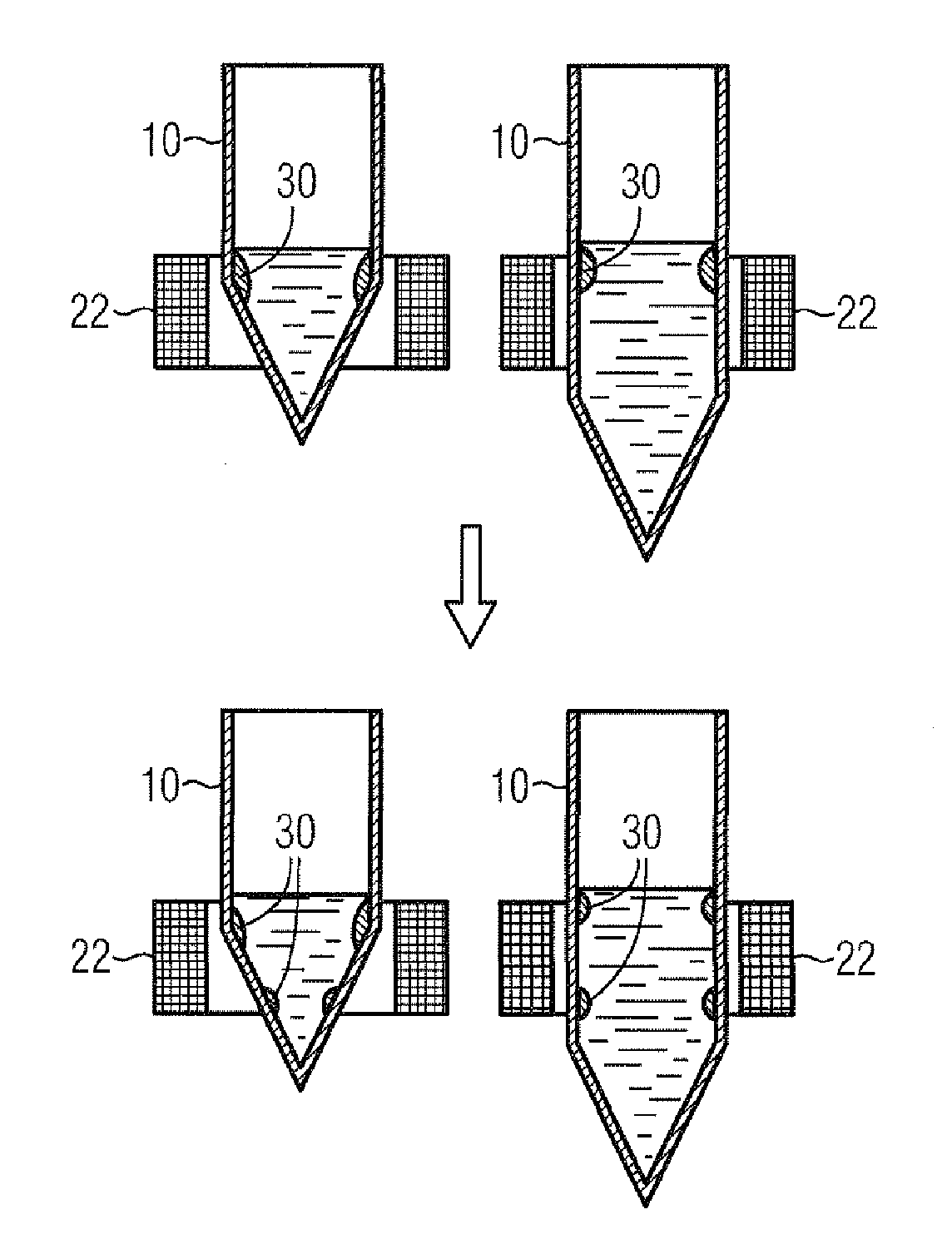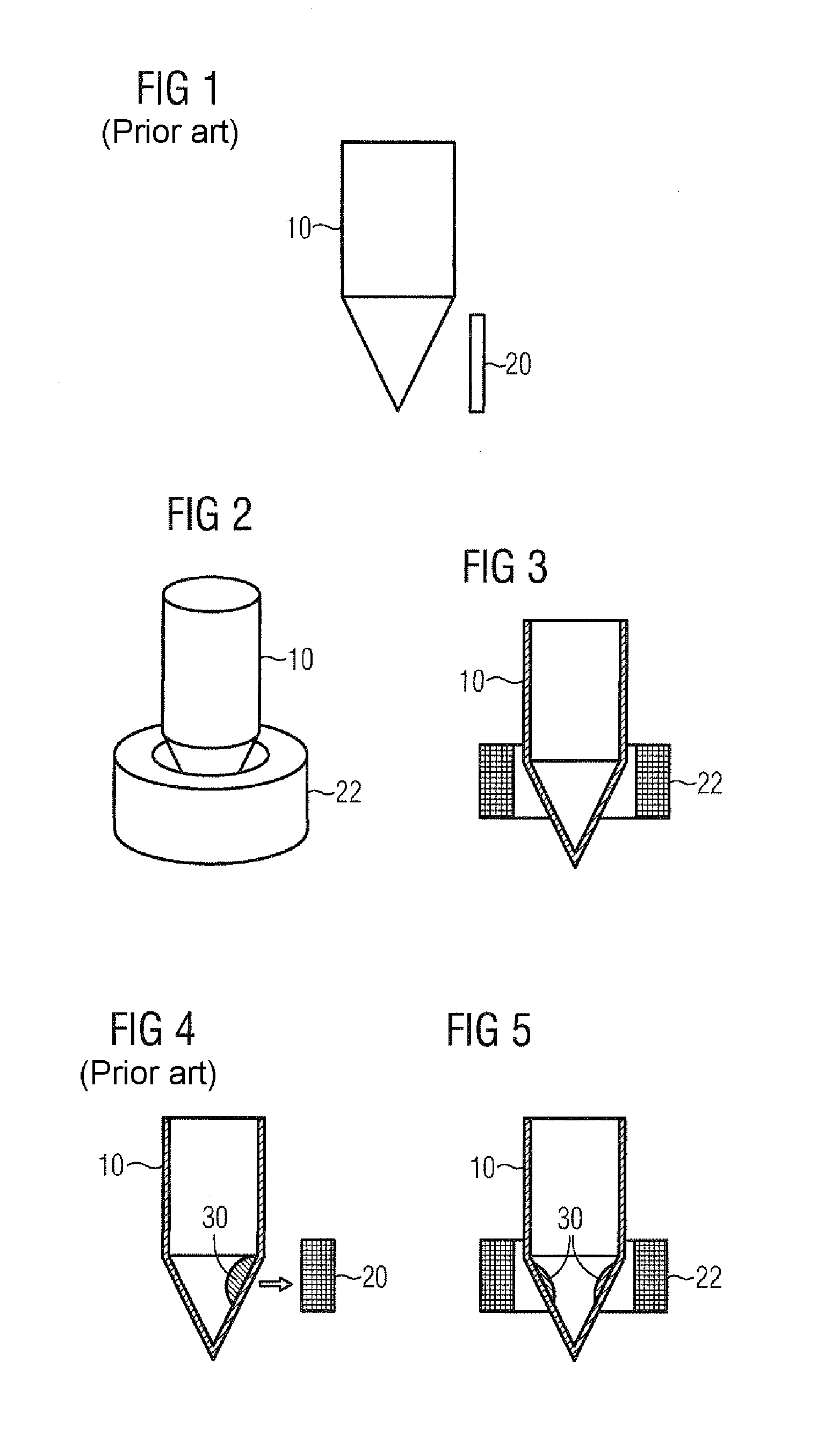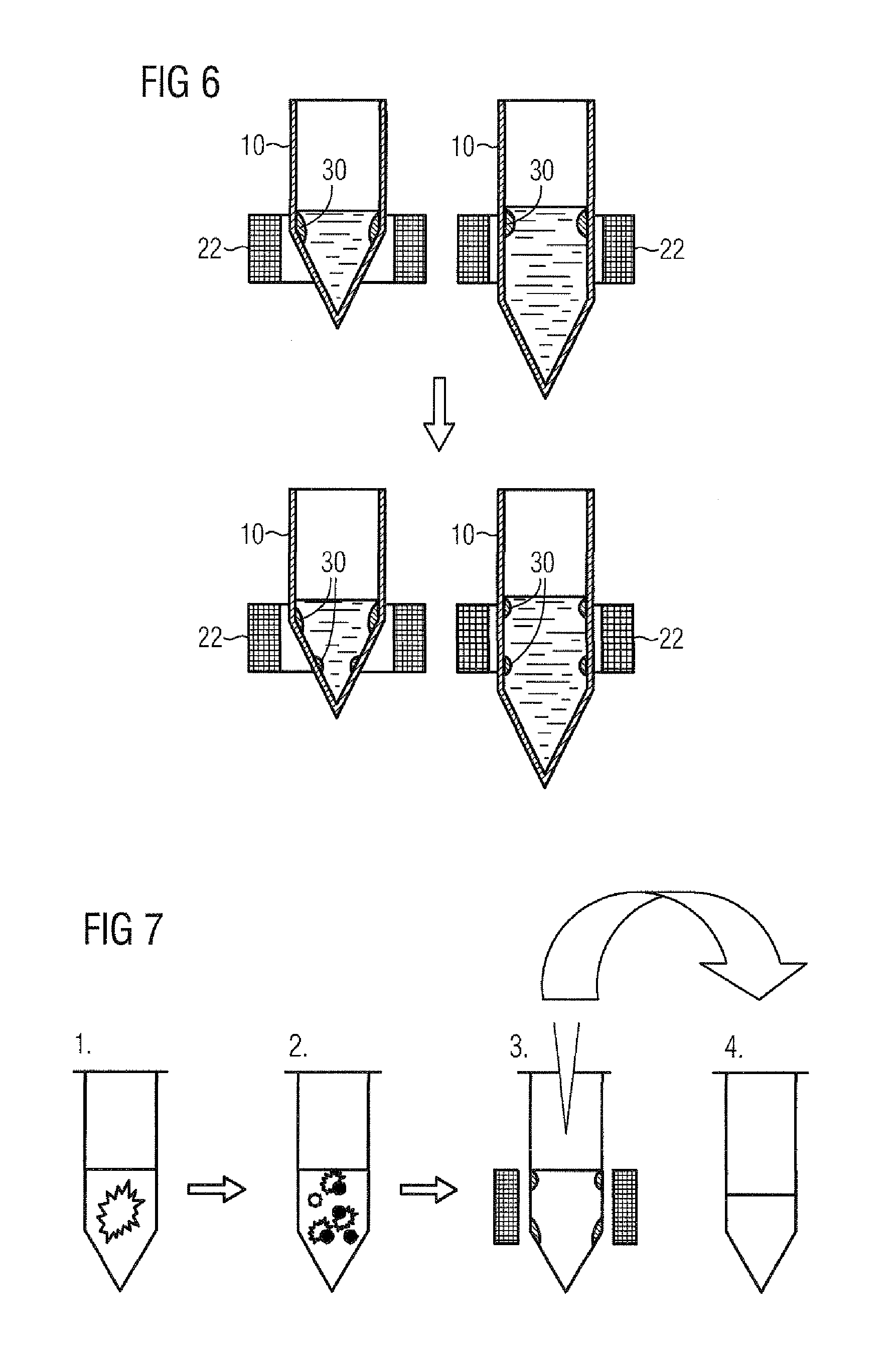Method For Purification Of Nucleic Acids, Particularly From Fixed Tissue
- Summary
- Abstract
- Description
- Claims
- Application Information
AI Technical Summary
Benefits of technology
Problems solved by technology
Method used
Image
Examples
example 1
Isolation of RNA from a Formalin-Fixed Paraffin Section with Removal of Debris by Adding Magnetic Particles Under Nonchaotropic Conditions
[0112]This method corresponds to the method depicted diagrammatically in FIG. 7.
[0113]RNA from FFPE tissue sections was purified manually as follows:[0114]centrifugation of FFPE tissue section in an Eppendorf sample vessel for 1 min at maximum speed;[0115]adding 150 μl of FFPE lysis buffer and 50 μl of proteinase K;[0116]incubation for 2 h at 65° C. with shaking (corresponds to step 1 as per FIG. 7);[0117]adding 50 μl of magnetic particles;[0118]mixing by shaking for 2 min (corresponds to step 2 as per FIG. 7);[0119]placing the sample vessel into the annular interior space of the magnet, possibly further upward and downward movement of the sample vessel (corresponds to step 3 as per FIG. 7);[0120]careful transfer of supernatant, by pipetting for example, into a new vessel (cell debris and paraffin residuals remain in the old vessel) (corresponds t...
example 2
Automated Purification of RNA from Formalin-Fixed Tissue Sections Using an Additional Binding Step with Magnetic Particles to Separate Cellular Debris Under Nonchaotropic Conditions
[0138]RNA from formalin-fixed paraffin sections was purified using the following automated protocol on a Siemens platform, VERSANT kPCR (extraction unit). Up to 48 tissue sections can be purified in one run.
[0139]Tissue sections (5-10 μm) were pelleted by centrifugation at room temperature and placed on sample carriers of the Siemens molecular platform VERSANT kPCR, where all hardware modules (sample vessel holder with ring magnet, heater / shaker, magnets, etc.), sample vessels, buffers, and pipette tips are placed at their designated positions.
Start of Purification Program:
[0140]loading the robot with one or more sample vessels which are placed into a sample vessel holder with ring magnet;[0141]starting the purification program;[0142]moving the sample vessel holders into the robot space;...
example 3
Purification of Nucleic Acids from Blood Samples
[0192]The method according to the invention is also particularly suitable for the purification of nucleic acids from blood samples because it enables improved removal of hemoglobin or erythrocytic fragments from the blood. According to the invention, there is firstly, under nonchaotropic conditions, the efficient removal from the sample of erythrocytes, erythrocytic fragments, and also released hemoglobin, which can all interfere with later process steps.
[0193]According to a first variant, 400 μl of lysis buffer (e.g., 10 mmol Tris-HCl, 0.1 mmol EDTA, 2% SDS, pH 8.0) are added to a blood sample (e.g., 100 μl of EDTA whole blood). Subsequently, 50 μl of a magnetic particle suspension (e.g., uncoated or silica-coated magnetic particles) are added to the sample, followed by incubation for 10 min at room temperature and separation of the particles by application of a magnetic field. From the removed sample, it is then possible, as describe...
PUM
| Property | Measurement | Unit |
|---|---|---|
| Temperature | aaaaa | aaaaa |
| Temperature | aaaaa | aaaaa |
| Temperature | aaaaa | aaaaa |
Abstract
Description
Claims
Application Information
 Login to View More
Login to View More - R&D
- Intellectual Property
- Life Sciences
- Materials
- Tech Scout
- Unparalleled Data Quality
- Higher Quality Content
- 60% Fewer Hallucinations
Browse by: Latest US Patents, China's latest patents, Technical Efficacy Thesaurus, Application Domain, Technology Topic, Popular Technical Reports.
© 2025 PatSnap. All rights reserved.Legal|Privacy policy|Modern Slavery Act Transparency Statement|Sitemap|About US| Contact US: help@patsnap.com



